DMC is rolling out all new tilt table demos for our locations across the country. This new set of tilt-table demos allows us to demonstrate to clients, recruits, or anyone interested in our business some of the many fascinating technologies we work with at DMC in a fun and exciting way.
These seven demos are much smaller and much more portable than the original demo allowing them to be transported easily to different events, plugged in anywhere, and stored in a minimum space.
Naming the New Demos
Our tilt demos are so interactive and fun that we felt they needed to be named, and not just numbered. We chose some of the most brilliant scientists throughout history as inspiration for our demo names. In some cases, the technologies developed by these pioneers is instrumental to the operation of our demo unit.

Marie Curie developed the theory of radioactivity.

Leonardo DaVinci created numerous inventions including his self-propelled cart, the first programmable robot.

Rosalind Franklin made significant advancements in understanding the molecular structure of DNA.

Katherine Johnson was a renowned mathematician for NASA calculating flight paths for space exploration.

Later adopted in Bluetooth and Wi-Fi technology, Hedy Lamarr discovered frequency-hopping radio transmissions.

James Clerk Maxwell is known for his significant contributions in electromagnetic theory.

Isaac Newton gave us the laws of motion which predict the path of the rolling ball on our tilt demo surface.
Let's Get Technical
Let’s take a more in-depth look into how this demo works. Starting from the bird’s eye view, you can see there is an iPad mounted at the top. The iPad is used both as a workpiece and a display to show how the system recognizes the ball.
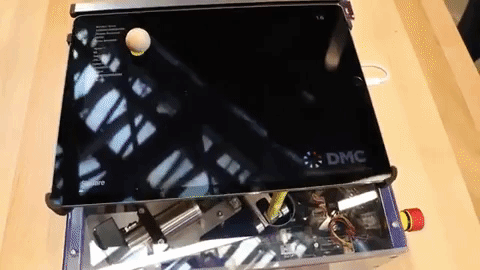
Switching between the different modes on the device changes the target location scheme for the ball, which is displayed as a yellow dot. The red dot shows the current location of the ball on the screen.
Locating the Ball with Sensors
The actual position of the ball is determined by a Neonode sensor which locates the ball on the screen surface. This sensor is mounted along the top edge of the iPad screen to give the 2D location of the ball on the iPad.
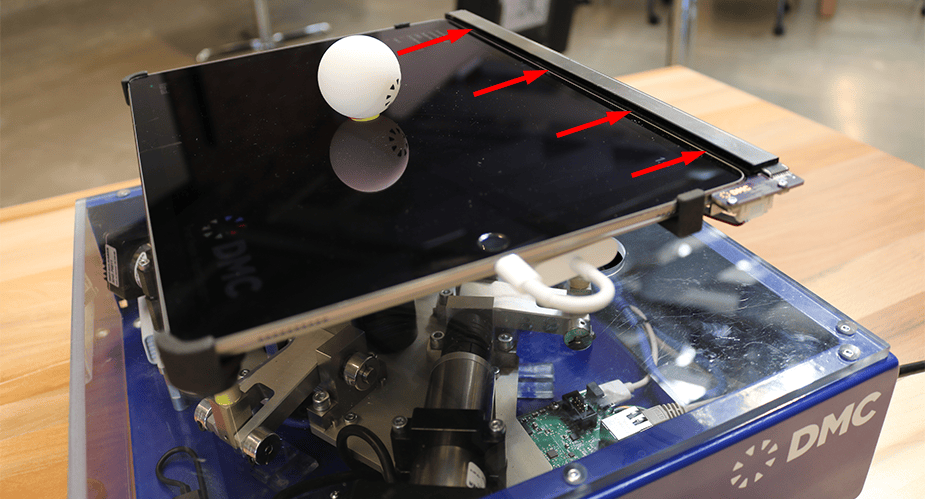
It uses an array of transmitters and receivers to triangulate an object’s location. Typically this sensor would be used for detecting touch-screen gestures on vehicles but we're using it for ball tracking. With the feedback from the Neonode, the system can adjust the iPad screen angle to move the ball around to mimic the target location in the iOS application closely.
Achieving the Ideal Position
Once we calculate a screen angle to roll the ball to the target position, that position is achieved by actuating the three Faulhaber motors which position the yellow crank arms of a tripod mechanism that tilt the iPad.
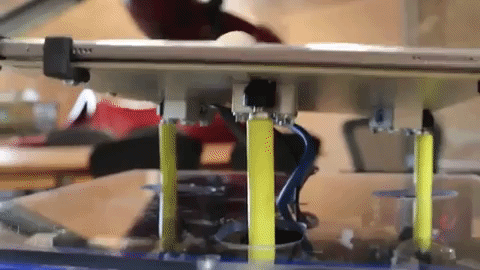
Target position path can be set to several different modes including a single point in the center, circle path, four corners, spiral, and maze.
Below you can see the device running in Maze mode and the Faulhaber motors going to work.
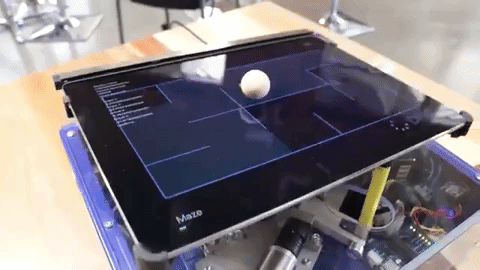
Safety First
Sporting a blue LED trim, the metal pushbutton on the side of the enclosure can be used to switch between modes.
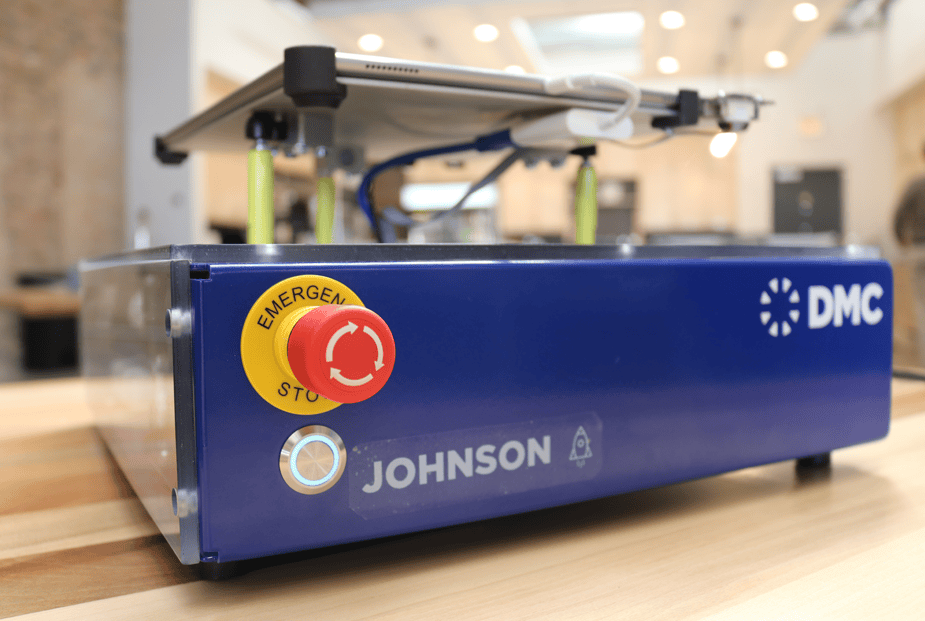
Right next to the push button is an emergency stop button to power down the device in case of emergency stop conditions or to pack up the tilt-table demo.
However, the safety design doesn't end with the e-stop button. The new tilt demo's motors were sized to be safe to interact with. The unit can't produce enough force between the tilting iPad and the base to injure a hand. Unlike our prior version, we can confidently operate the new tilt demo without a safety cover.
Honey, I Shrunk the Electronics
We shrunk the electronics in the new tilt demo. There are two circuit boards involved in the system. This top one is the green, single-board RIO from National Instruments. Programmed in LabVIEW, the single-board RIO computes the tilt response on its real-time processor to best match the ball-target and actual locations. Its FPGA core reads the position from the Neonode and sends leg motion commands.
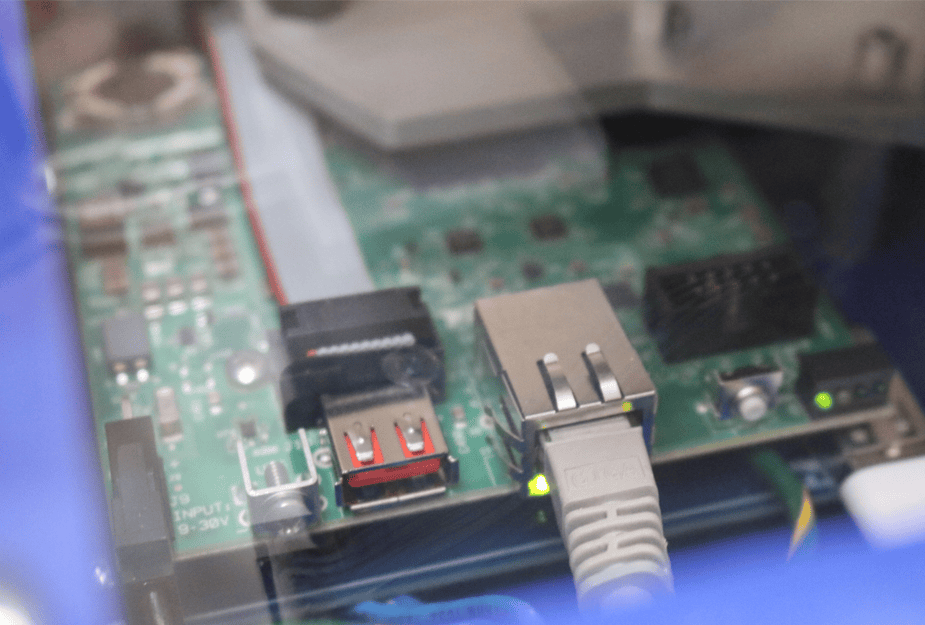
The lower board is a DMC-designed carrier board which distributes the cRIO digital signals to the motors and Neonode sensor. It also hosts power input, safety circuit, and iPad charger.
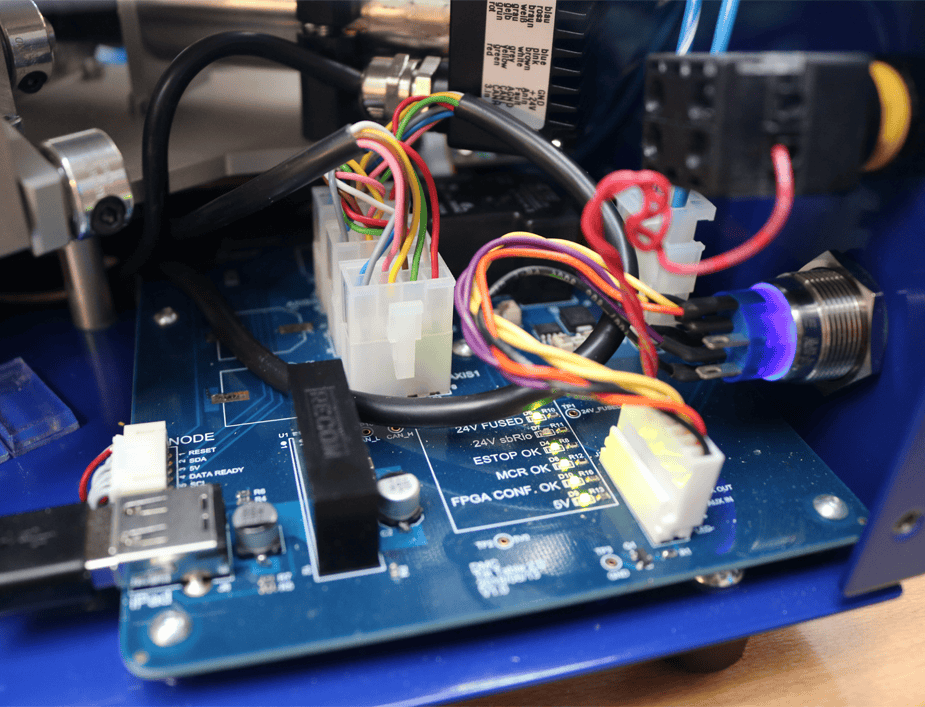
Keeping Everything Connected
The demo has a small, white network router on the bottom which links the system together and allows configuration and troubleshooting of the system.
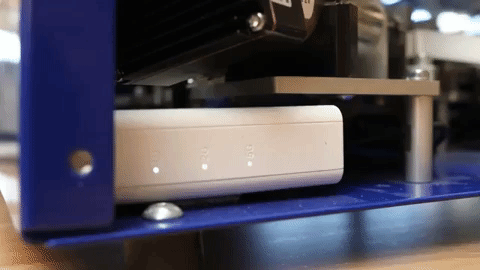
Summary of Technologies
Here is a summary of the relevant technologies and devices used in creating this demo.
- National Instruments LabVIEW
- Apple iPad
- Neonode Sensor
- Faulhaber Motors
- Network Router
Contact Us to learn more about DMC's services.